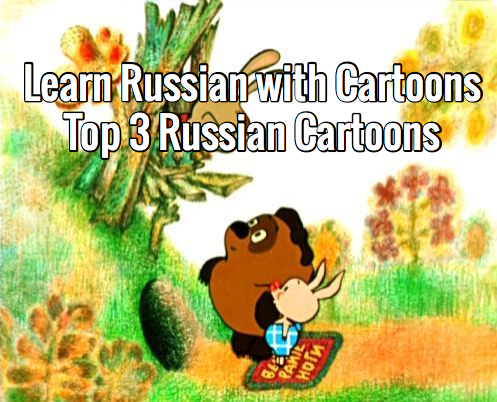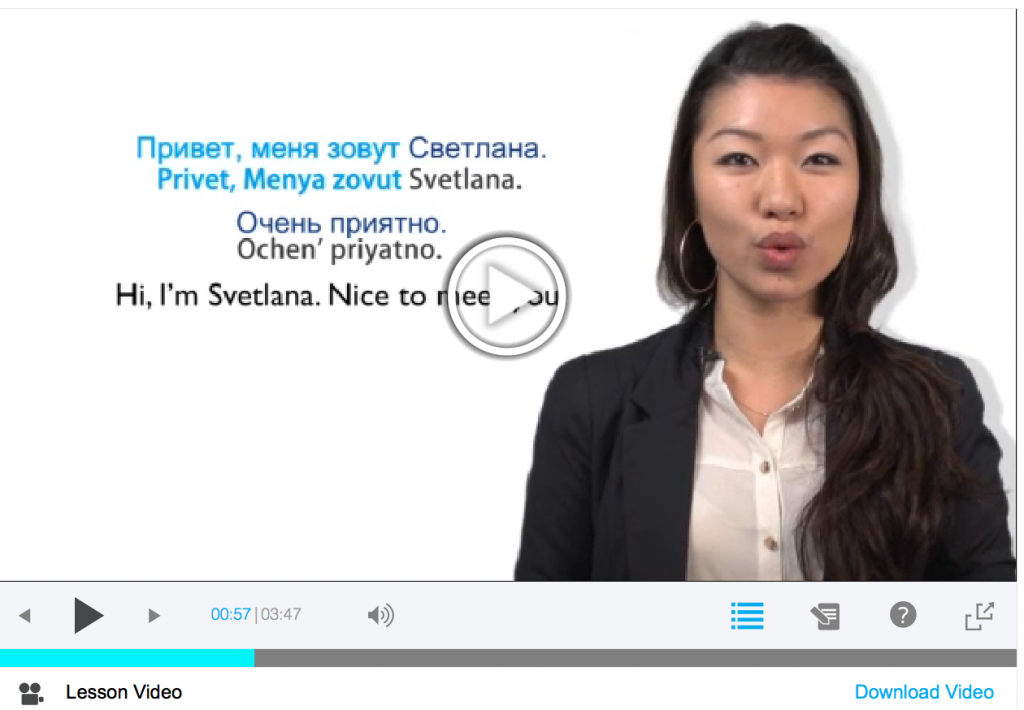You know, learning Russian and overlooking Russian cartoons should be a deadly sin. Old soviet cartoons, while lacking in animation skills, make up for in depth and are loved by all Russians.
If you’re learning the language, you need to check them out.
How can watching Russian cartoons help your Russian skills you ask? Well, good question. It’s passive learning so, unless you’re sitting there with a pen, paper, dictionary and pausing for every word… it won’t be the complete answer to learning Russian. However, there are some awesome benefits:
- Entertainment. Learning doesn’t suck.
- You get Russian listening comprehension practice in.
- You may pick up on new words, phrases, etc.
- You’re exposed to native Russian speaking.
- It’s easy. Cartoons are made for kids, so they’ll be a good resource use as a beginner or intermediate learner.
- You get a dose of culture. Every Russian native knows and loves these cartoons.
✅ Hey, if you REALLY want to learn & speak Russian, I suggest RussianPod101. You get 1,000+ audio/video courses, lessons by Russian teachers and a whole learning system. Sign up at RussianPod101 (click here) and start learning! I recommend ’em as a teacher & learner.
Okay, let’s get to it. What are the best and most popular Russian cartoons?
Well, I’m biased. Here’s my top 3 list.

1) The Soviet Winnie the Pooh – “Vinni Pukh” – Винни-Пух
Some say he’s the smarter, more intellectual version, when compared to the Western Winnie. However, in Western Winnie’s defense, Disney dumbed him down. The original Winnie, created by Alan Alexander Milne, is zen/Taoist as hell.
There’s so much insight in such a simple mind. (Read the book, The Tao of Pooh.)
But, I’m straying from the topic.
The Soviet Winnie is talkative, rambunctious, clever, with a side of adorable Russian obnoxiousness for the sake of getting some honey. In the episode below, he goes visiting. Why? Because when you visit someone, they’re likely to treat you to something, something like honey! If that’s not a devious little Bear, I don’t know what it is.
Check out “Winnie Pooh Goes Visiting (Vinni Puh Idet v Gosti)” below. It has subtitles so you can follow along.
2) Just You Wait! – “Nu, Pogodi!” – Ну, погоди!
Nu, pogodi is the Soviet Union’s answer to Tom and Jerry. But, instead of a cat chasing a mouse, it’s a wolf (Волк or Volk in Russian) chasing the rabbit (Заяц or Zayats in Russian).
And it’s a wolf that’s very much addicted to cigarettes.
That’s very much a big hooligan.
There’s lot of chasing, injuries, smoking, but very, very little dialog…. except “Ну, Заяц, погоди!”
By the way, Ну (nu) in Russian means “Well….” Depending on the context, it’s used to
- express frustration
- imply a pause because you’re looking for something to say, kind of like “Well” or “Hmm“
- add emphasis on what you’re going to say next, like “Well, let’s go!“
And as mentioned already, Pogodi – погоди, pretty much means “wait.”
The wolf will yell “Ну, Заяц, погоди!” just as the rabbit finally gets away. You won’t really need subtitles for this cartoon.
3) Karlson That Lives On The Roof – “Karlson Kotoriy Zhivet Na Krishe” – Карлсон который живёт на крыше
Well, this one isn’t really Russian. It’s a popular Swedish story that found success in the Soviet Union. What’s it about?
Well, there’s a kid, Malish (or Малыш) – meaning Junior – that just wants a damn dog because he’s lonely.
And then, there’s Karlson (or Карлсон), a …strange fat little man with a propeller on his back that’s activated by the button on his stomach. He’s a prankster. He loves sweet pastries and jam. He becomes Malish’s companion and they cause all sorts of rambunction together (while sneaking jam and pastries for themselves.)
Lots of conversations and witty use of Russian language in this one, so this will be useful for Russian learners. Subtitles are available in the video below.
– https://youtu.be/9eiqer5W9ME
Conclusion:
Remember, watching cartoons is passive learning unless you’re sitting there with a pen, paper, dictionary and pause every minute to understand everything.
- At the least, your ear will get used to Russian language. Such is passive learning.
- At the most, you’ll pick up new words and perhaps begin to understand the dialog.
However, cartoons are fun, easy to understand, and a good resource to use for your downtime when you don’t want to actively put crap in your brain.
Have you watched any other awesome cartoons the sake of learning and or fun? Leave a comment below!
Want to learn to Russian with effective lessons? Sign up for free at RussianPod101 and start learning and speaking Russian!
>> Click here to sign up for free and learn Russian at RussianPod101!

